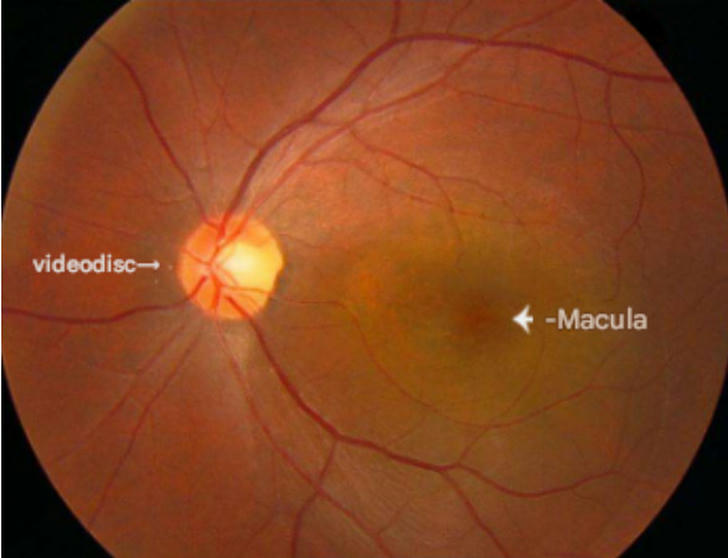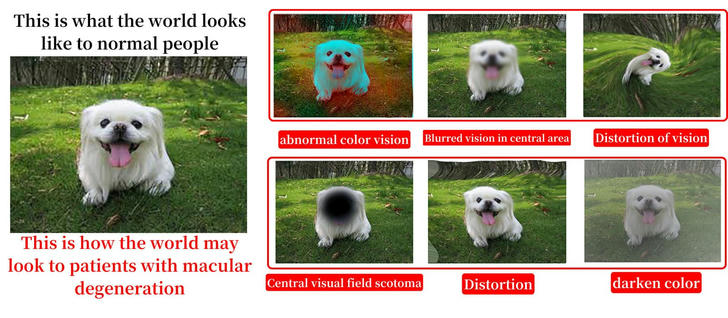The Secret of the Heart of the Eye (Macula) You Don't Know
I am called the macula, and everyone refers to me as the "heart of the eye." Each person has a macula in their eyes, and it is important not to confuse it with yellow spots or facial melasma. The macula plays a crucial role in the structure of the eye, and failing to recognize or understand it could lead to missing the optimal time for treatment, potentially resulting in blindness. Therefore, please take the time to learn about this treasure at the back of your eyes—the macula—alongside the doctors at Peking Union Medical College Hospital.
Self-Introduction of the Macula

I am called the macula because I contain a lot of lutein and resemble a "yellow spot," hence my name. People often compare me to the "heart of the eye" because I am the area with the sharpest vision! I am a neighbor and a good working partner with the optic nerve head. Although we have different responsibilities, our main purpose is to help people see the world clearly. Besides me and the optic nerve head, the branch-like lines in the image represent the blood vessels at the back of the eye, which supply nutrients to the cells.
What Do I Do?
In simple terms, my job is to be responsible for people's vision, color perception, and shape recognition. I help people see all bright objects, recognize three-dimensional shapes, and distinguish various colors. The healthier I am, the better a person's vision will be.
I Am Important But Fragile!

Although I work day and night to bring light to people, if you do not take good care of me, I can become ill. Conditions such as central serous chorioretinopathy, age-related macular degeneration, macular edema, macular holes, and epiretinal membranes can affect me. My illnesses can arise from various causes such as genetic factors, old age, environmental factors, imbalanced diets (like a lack of carotenoids), chronic diseases (such as hypertension, diabetes, hyperlipidemia, cardiovascular diseases, and obesity), and more. Smoking, drinking alcohol, and failing to protect me from sunlight can also harm me invisibly.
How Can You Tell If I Am Sick?

Once I become ill, you will notice significant changes in your vision. Symptoms may include color perception abnormalities, blurred central vision, dark spots in your central field of vision, distorted images, twisted views, or darkened colors. Often these symptoms are irreversible; hence people commonly refer to my conditions as "eye cancer."
How Can You Protect Me?
At this point, many might wonder: can macular degeneration be prevented? I want to tell you that preventing my degeneration starts with knowing how to care for me. Here are a few tips:
1.Diet: Eat more vegetables and fruits.
Vegetables and fruits contain plenty of antioxidants like trace elements, various vitamins, and lutein. Eating fish is also beneficial since it is rich in unsaturated fatty acids with strong antioxidant properties.
2.Lifestyle Habits: Quit smoking, exercise regularly, control blood pressure and weight.
Research shows a clear correlation between smoking and age-related macular degeneration. Additionally, actively preventing high blood pressure, high cholesterol levels, and high blood sugar while avoiding overly greasy foods can help prevent or slow down age-related macular degeneration.
3.Sun Protection: Avoid direct exposure to bright light without protection.
Ultraviolet rays can penetrate through the lens and directly damage me by causing photochemical reactions with my photoreceptor cells. Therefore, UV rays are invisible killers for your eyes; we cannot overstate their impact but must not ignore their dangers.
How Do You Check Me?
The method is very simple; you only need an Amsler grid for self-testing:
🟢1.Wear your glasses (reading glasses or prescription glasses) in a well-lit area and hold the grid 30-40 cm away from your face.
🟢2.Cover one eye.
🟢3.Focus on the center point with the uncovered eye.
🟢4.Observe if any straight lines appear bent or blurry.
🟢5.Repeat this test for the other eye.
If you notice any lines bending or distorting during testing, you should immediately visit an ophthalmologist for further examination that may include special tests like OCT or fundus photography to detect early changes in my condition for timely diagnosis and treatment.
Through my self-introduction as the macula, I hope everyone has gained some understanding of this "commander" within your eyes! Here’s a little poem for you:
Having a macula is not an illness; it's only an issue when it becomes diseased.
The small macula holds great knowledge; working day and night towards brightness.
If disease strikes my domain; all aspects of vision will suffer.
To keep my health intact; self-testing and prevention are key.
